Salmon is quite possibly America’s favorite mealtime fish. Unanimously lauded as the number one healthy seafood choice by many of our sources, salmon is tasty and more popular than ever before. A great choice for breakfast, lunch, and dinner; salmon aficionados will tell you that there are countless ways to make this amazing ocean protein. Lost during prep? The best ways to cook salmon can guide even the most base-level home cooks.
The first question that can come to mind for folks that like to prepare and eat salmon, is how to keep it exciting? Armed with this list of techniques, home-cooks will be able to improvise with their favorite flavors and side dishes. Plus, salmon is perhaps one of the best sources of dietary Omega-3 fatty acid. According to a recent study, Omega-3 carries many health benefits, and a new review suggests eating three grams of it per day is enough to lower your blood pressure. The findings include omega-3 fatty acids obtained from food or dietary supplements. Omega-3 fatty acids are an abundant nutrient in fatty fish such as sardines and salmon with research connecting omega-3s with increased cognition. Some studies have linked omega-3 fatty acids with low blood pressure, though the evidence is inconclusive.
Another recent study suggests that salmon is good for a healthy body and a healthy mind. Alzheimer’s disease has no cure. However, the current study suggests omega-3 DHA, which is found in salmon, may have preventative effects, which is especially important for people carrying the ApoE4 gene. Possessing this gene doubles the chances of developing dementia. The team estimates that people who maintained high DHA levels will live 4.7 more years without Alzheimer’s. The impact of preventing Alzheimer’s would not only benefit an individual’s health but also reduce the economic cost of living with the disease. Currently, the cost of treating Alzheimer’s and dementia in the United States is about $355 billion. The researchers estimate living almost 5 years Alzheimer’s-free could save over $500,000.
With so many members of the scientific and culinary communities in agreement that salmon is good for you, we can now focus on making it taste great. Here’s our list of the top five best ways to cook salmon according to our expert culinary sources. Let us know your favorite way to make this nutritious fish in the comments below!
The List: Best Ways to Cook Salmon, According to the Pros
1. Baked
Baking salmon in the oven is an easy hands-off method for cooking that even works for whole side fillets. “TBH, salmon is a healthy protein-rich food no matter how you prep it. But if you’re looking to lower how much cooking fat you use, a study found salmon’s total fat content was lower with oven cooking. How to cook it: Preheat oven to 400°F (200°C). Season salmon with salt and pepper, a drizzle of olive oil, and lemon juice (or your preferred spice combo). Place fillets skin-side down on foil-covered baking sheet. (Foil is your friend for quick clean-up.) Bake in the center rack of oven for about 5 to 10 minutes, depending on how thick your fillet is. Add 1 to 2 minutes for more doneness,” says Greatist.
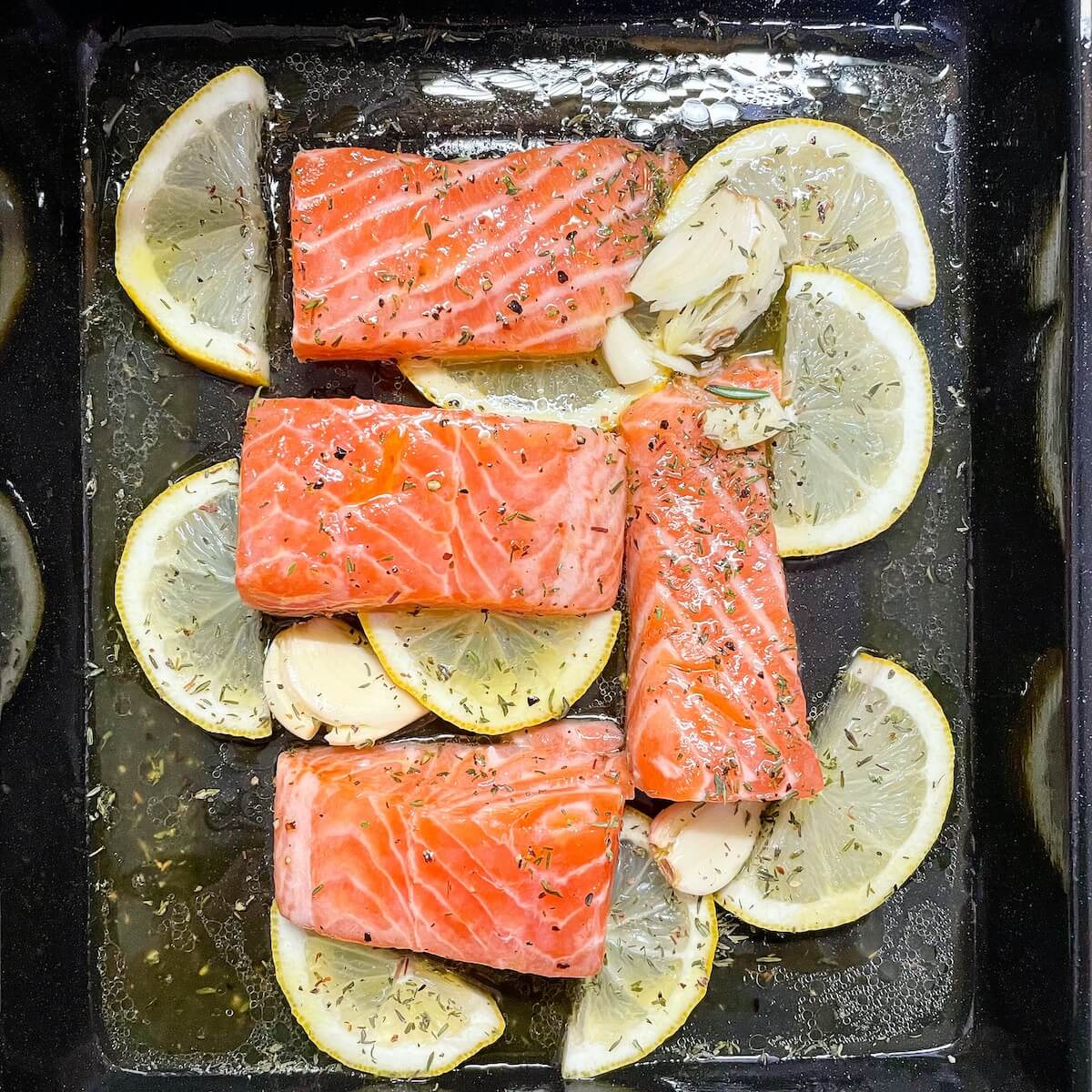
Mansion on Rush points out this method’s advantages: “When using the oven as your primary cooking tool for salmon preparation there are several key factors working in its favor: 1) Consistency: An oven usually provides even heat distribution while cooking the fish; this can help ensure that your fish cooks evenly without developing any hard textures. 2) Convenience: You don’t need to supervise the fish during the entire process when using an oven – giving you more flexibility with time management – simply set up timer and leave till ready!” They do warn that overcooking is easy to do, therefore still keep a watchful eye on your dish in the oven.
The oven method is fast, easy, and results in less mess than some of the other entries on our list. “Prepare the oven. Preheat your oven to 375 degrees Fahrenheit. Line the pan with your foil and spray the surface with your cooking spray. STEP 2 Ready your salmon. Pat your salmon with a paper towel to remove water. Place it in a skin-side down position inside the foil-lined pan. STEP 3 Pour the other ingredients. Put your butter on the fillets and season with salt and pepper. STEP 4 Bake the salmon. Bake it for 10 to 15 minutes or until you can easily remove the flakes using a fork. Better yet, start checking at 10 minutes. Avoid overcooking,” writes Quick Easy Cook.
2. In a Pouch
Cooking salmon in a tightly sealed pouch is more commonly known by the French name for this technique: “En Papillote. In addition to providing endless opportunities to say en papillote to my significant other and dog, cooking salmon this way—folded into a parchment paper packet, then roasted at 400 degrees Fahrenheit—offered many benefits. The steam trapped by the parchment seal ensured that the fillet was juicy. The close quarters created the opportunity for deeply flavored fish; were I not conducting a strict experiment, I could’ve stuffed it with aromatics and seasonings, like ginger and garlic. And perhaps most importantly, salmon en papillote provided the opportunity to unwrap a personalized gift before tasting. Ease of Method: The main drawback was the tricky business of determining whether the salmon had finished cooking, since it lurked beneath an opaque layer of parchment. (I used a finger to press the center of the packet and judged by feel.) Internal Texture: The fillet cooked en papillote was full of flavor and tender, despite bare-bones seasoning and a layer of albumin that hinted otherwise,” says Food 52.
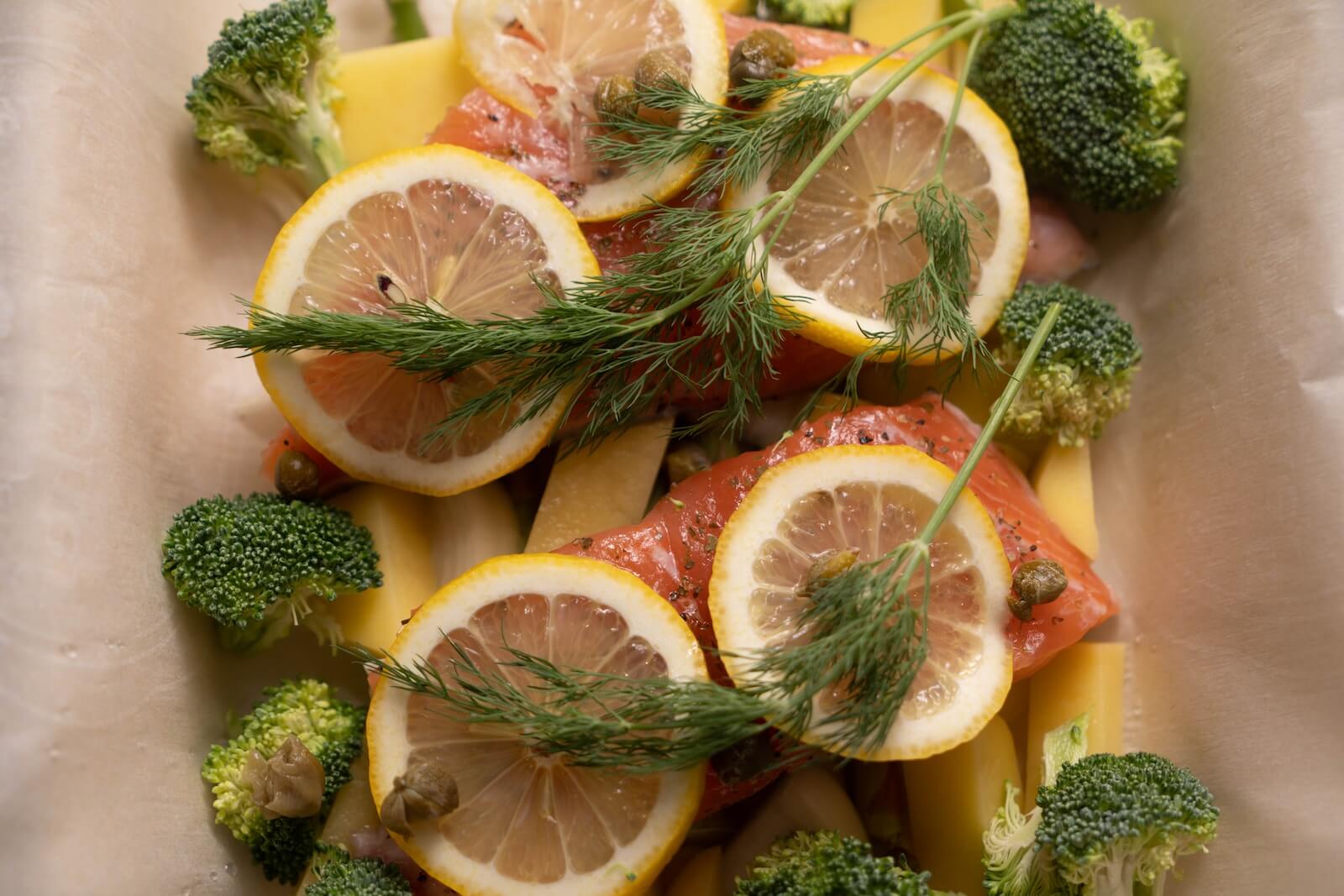
The French name speaks of elegance, but don’t let that make you think that it is too difficult to pull off. “Sounds difficult? Nah, it’s just French for ‘wrapped up in parchment’. The method is still quite simple. If you are using vegetables, slice thinly and layer them with the longest-cooking veggies at the bottom. Place salmon fillet on top then sprinkle with salt and pepper. Add dried herbs and lemon slices for a more flavorful taste. Close the parchment paper and bake for 12 to 15 minutes at 400 degrees F, depending on the vegetables used and how well done you like your salmon. Unwrap the packets to avoid overcooking of the fillets,” recommends Bluglacier.
If you don’t have parchment paper, not to worry. This method works equally well with a foil pouch. “This method is simple and even easier to clean up. How to cook it: Preheat oven to 400°F (200°C). On a piece of foil place a salmon fillet, a drizzle of olive oil, salt, pepper, other herbs of choice, and a wedge of citrus. You can also add small sliced veggies to the packet. Fold the foil up and crimp the edges, so everything is completely enclosed. Repeat for each salmon fillet you want to cook. Place foil packets on a baking sheet. Bake until salmon is cooked through, for about 20 to 25 minutes,” explains Greatist.
3. Poached
Poaching is to cook in acidic water over low heat to preserve tender textures. “If you want your salmon recipe fat-free, you can have your fillets poached. Simmer your salmon fillets in water. The water should cover the fish. Use eight a straight sided skillet or heavy pot. On simmer, cook the fish until it becomes opaque, or for about five minutes depending on the thickness of your cut. You can add any flavors or vegetables to the water to cook into the fish through poaching. For something super easy and basic you can poach it with a pinch of salt, pepper, a garlic, parsley, and a squeeze of lemon once it’s done. You can also use white wine or chicken stock to add more flavor. Make sure there is enough water to cover the fillets,” advises Bluglacier.
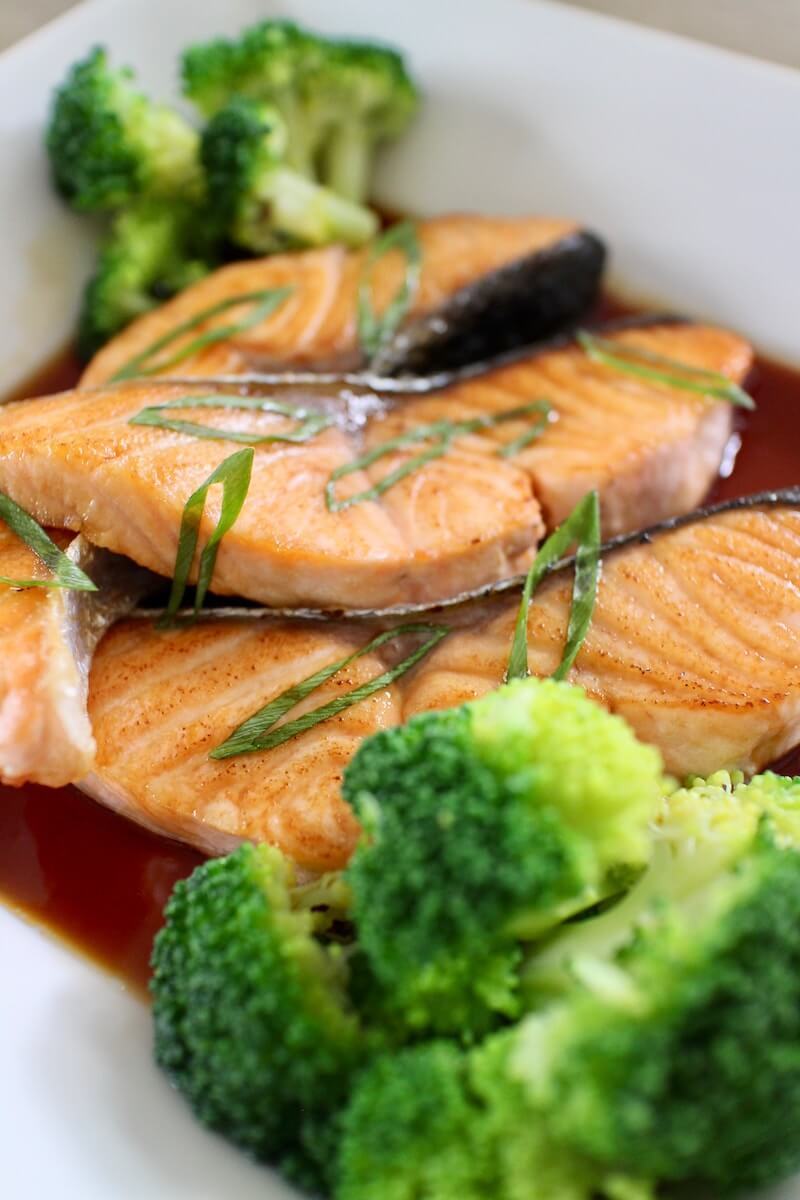
A great choice for health-conscious cooks, “poaching is a lighter way to cook salmon by simmering the fish in a broth, water, or wine instead of heavy seasoning and cooking fats to create tender, flaky, naturally flavored fillets. A simple poached salmon makes a perfect base for salmon salads, fresh salmon cakes, or when topped in a buttery white wine sauce or an herby basil pesto cream. In a large non-stick skillet or heavy pot, add a poaching liquid (white wine or stock) water with a pinch of salt, whole peppercorns, and a bay leaf. Bring to a boil, reduce simmer for 5 minutes. Gently lower the salmon into poaching liquid so the fillets are fully covered (add more water if needed). Bring to a slow boil, reduce heat to medium and poach until salmon flesh is firm, about 15 to 20 minutes,” explains All Recipes.
This simple technique can produce excellent results. “Fabulous over a Summer Salad with Strawberry Rose Dressing or with a creamy dill sauce. The poaching method is quite simple. Just add water, white wine, aromatics, lemons and herbs to a pan. Then, lower the salmon into the pot so it is just covered by the liquid. Poach the salmon for about 5 minutes or until it is no longer opaque. Carefully remove and enjoy,” writes Healthy World Cuisine.
4. Pan Seared
The pan sear is a great method and is well-loved by cooks that want to showcase their talent in the kitchen. “It’s quick, easy, and gives the fish that perfect crispy, crunchy skin. A simple pan-fried salmon is the secret to a flavorful and healthy weeknight dinner in 30 minutes or less. Season the salmon fillets with salt and pepper. In a large skillet, add butter or oil and the salmon fillets skin-side down. Heat to medium-high and cook for about 5 or 6 minutes. Gently use a wide spatula to flip the fish and cook skin-side up for 3 to 5 minutes or until done. Finish with a little squeeze of lemon. Tip: To test salmon for doneness, use the tip of a knife to peek between the flakes of fish. It should be a slightly darker pink at the center. You can also insert a meat thermometer into the thickest part of the fillet; aim for a temperature of 125 degrees F,” says All Recipes.
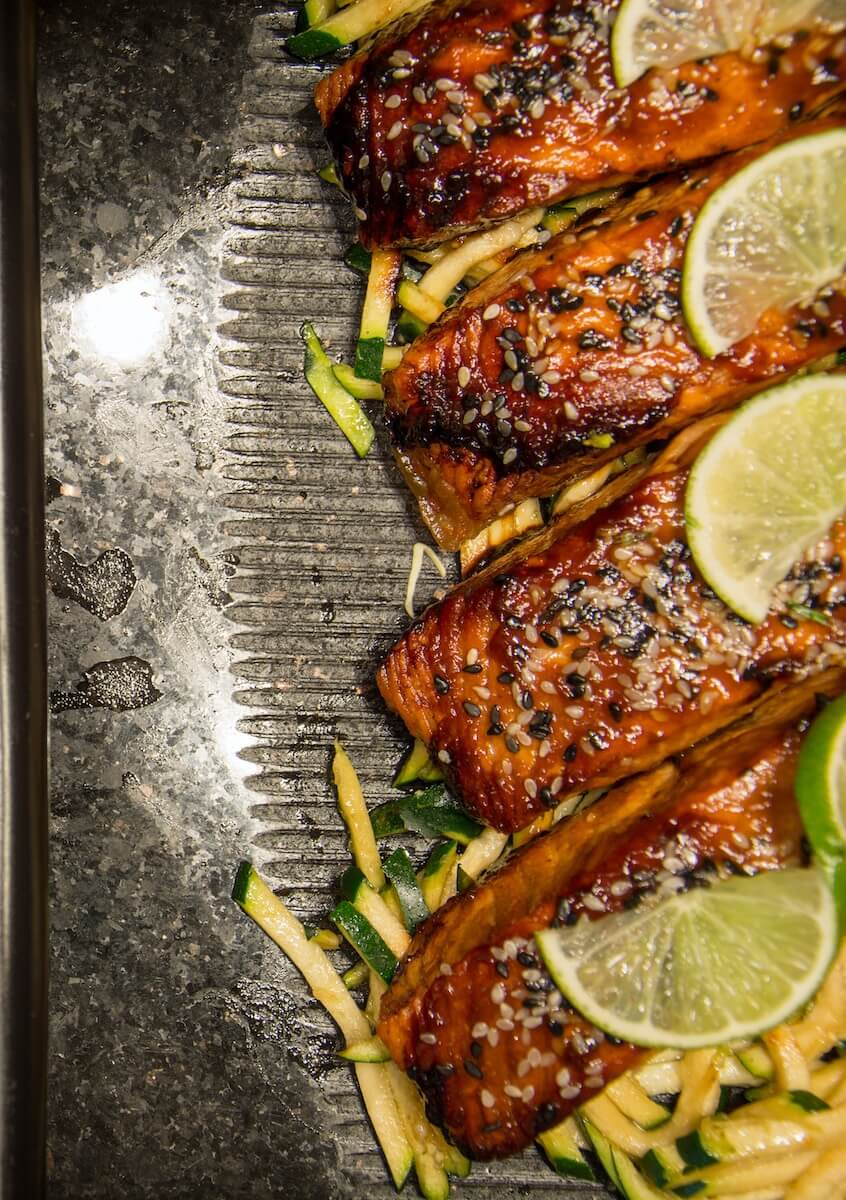
Even the health-focused home-cook can rest assured that pan searing is a solid method for a healthier entrée. “It’s all about the sear! The best way to cook salmon is to preheat the oven to 375, and preheat a large pan on high. Season the salmon well with salt and pepper, then add some oil to the pan. When the oil dances, place the salmon (skin side UP) on the pan. Let it sear (you should hear a sizzle, or the pan isn’t hot enough) for 30 seconds to 1 minute. When you transfer it to the baking dish, place it skin side DOWN so the lovely browned top is facing up. After that, bake for 10-12 minutes, until it flakes easily with a fork,” adds Fitnessista.
Once mastered, “Pan seared salmon reigns supreme as the simplest, quickest, and debatably(sic) most delicious way to prepare salmon. In under 10 minutes and only 3 ingredients (salt, pepper, and salmon) you will be enjoying a crispy, juicy, tender piece of salmon. Serve alongside your favorites sautéed vegetables with some parmesan cous- cous, jasmine rice, or even atop of a fresh salad. The possibilities are endless, and this preparation will not steer you wrong whenever you need a stress free, healthy lunch or dinner. How to Pan Sear Salmon. Use an oil with a high smoke point, like canola oil, sunflower oil, or avocado oil. Using an oil with a low smoke point, such as extra virgin olive oil, will cause that oil to burn in the pan & will not allow you to get a proper sear on your salmon. Your salmon should sizzle when placed in the pan. That is how you will know it is hot enough. Once it’s in the pan, try not to move it to allow for a nice layer of caramelization to form on your salmon. This will reward a beautiful sweetness and satisfying crunch when enjoying the finished salmon dish,” mentions North Coast Sea Foods.
5. Grilled
Break out the salmon and fire up that grill! “This method is honestly SO easy. Our favorite thing about this method is the smoky flavor the grill adds to the fish. Get your grill hot before cooking. Prepare salmon by brushing with oil and your desired seasoning or rub. The oil is key to prevent sticking to the grill. Also, make sure your salmon is pre cut into your desired serving or plating size. This will make it much easier to flip so that you’re not trying to flip a larger piece of fish. Flip it after 5 minutes. When your fish becomes flaky, it’s chow time,” claims Bluglacier.
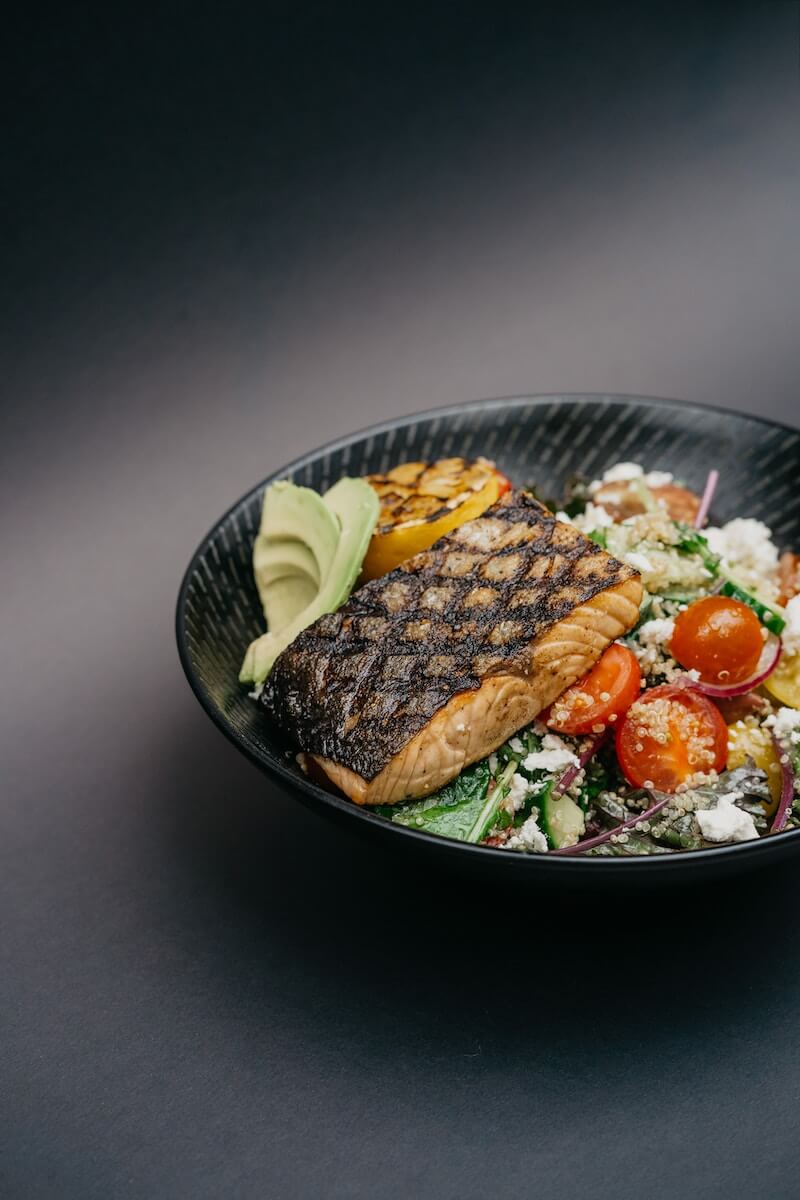
On the grill, steaks and burgers might be the king of the hill, but salmon is another increasingly popular choice for the fire. “Pump up your barbeque game with grilled salmon. The chargrilled flavor gives a smokey flavor to these juicy flaky salmon fillets. It’s best to use a fish basket or grate over the grill to prevent losing any of the delicious fish inside the grill. Been there! Done That! We first like to clean and oil the grill and preheat our gas grill to 450 degrees F (232 degrees C). Then, dry your salmon well on both sides. Next, we add olive oil and salt and pepper on both the skin side and flesh side of the salmon. We put the skin side down first on the BBQ grill and make sure to close the lid too. After the 5–6-minute mark, we gently turn our grilled salmon over and grill for another 1 minute or until the fish flakes easily with a fork. We usually remove the skin before eating. Try delicious topping on your salmon like an Easy Mango Salsa,” advises Healthy World Cuisine.
When it’s time to grill, why not try out your favorite salmon recipe? According to Thor Kitchen, “Heading into the warm months, some grilled salmon sounds mighty tasty. This is another very common way to order salmon out – and it is super easy to make at home. So, let’s go fire up that grill outside. You can, again, season the salmon to your liking, then place it on a grill that has been lightly oiled. On high heat, you will want the skin side down on the grill grate first. Grill it for about 10 to 15 minutes, flipping it about halfway through. Tip: Don’t keep flipping your salmon over as you would a different type of meat. Flip it once.”
You might also be interested in:
Sources
- Healthy World Cuisine
- All Recipes
- Food 52
- Fitnessista
- Bluglacier
- North Coast Seafoods
- Thor Kitchen
- Greatist
- Mansion on Rush
- Quick Easy Cook
Note: This article was not paid for nor sponsored. StudyFinds is not connected to nor partnered with any of the brands mentioned and receives no compensation for its recommendations.
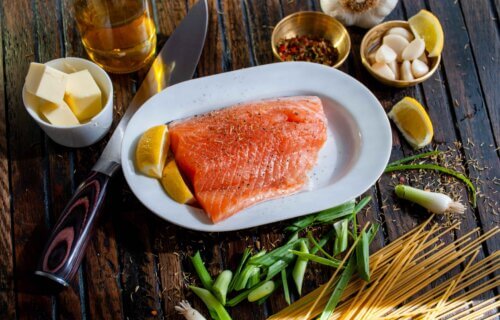
The best salmon I ever ate was cooked on a “Cedar Plank”. The plank must be soaked for 2 + hours in water. I suggest removing the skin and placing the salmon on the cedar plank, skin side down. Then barely cover it with spicy mustard and then cover it over with light brown sugar. Cook it on a grill for about 20 minutes on a medium high heat. Enjoy!
Best for me is soak fillets in a wine and seasoned brine for a day or two then put in a smoker for 6 hours or so. Omg! No fishy taste at all. You wont want it any other way.
I make salmon salad weekly and my favorite way to cook the salmon is place your fillet (skin or skinless) on a steamer rack, season with s/p and preferred spices, set the rack in a 12″pan with an inch of water, you can add aromatics to the water if you like. Bring to simmer cover with lid and steam for 8-10 min depending on thickness. Comes out perfect, juicy and flakey for mixing into a salad. Super easy to prep and cleanup after.